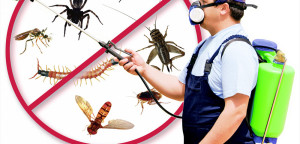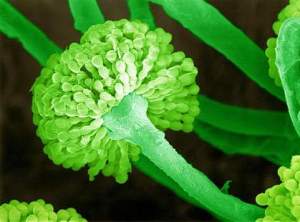
Did you know that many common items found in day care and early learning classrooms can pose environmental hazards to the children in your care? These pesky, dangerous hazards hide in plain sight and are found in some of the most common everyday products. Products containing chemicals and heavy metals linked to childhood asthma, learning disabilities, and increased risk of cancer are found in classrooms worldwide. Luckily, you can help prevent harmful environmental exposures by identifying potential hazards in your classroom!
Lead
 Lead exposure, even in small amounts, is now known to affect children’s brain development resulting in reduced intelligence quotient (IQ), behavior changes such as reduced attention span and increased antisocial behavior, and reduced educational attainment. Lead exposure also causes anaemia, hypertension, renal impairment, immunotoxicity and toxicity to the reproductive organs. Unfortunately, lead can be found in many homes and daycares due to the previous widespread us of lead paint. Lead paint could be present on walls and doors, as well as on toys and ceramic dish ware. Carpets and other fabrics can collect lead dust and chips over time and become highly concentrated sources of lead exposure.
Lead exposure, even in small amounts, is now known to affect children’s brain development resulting in reduced intelligence quotient (IQ), behavior changes such as reduced attention span and increased antisocial behavior, and reduced educational attainment. Lead exposure also causes anaemia, hypertension, renal impairment, immunotoxicity and toxicity to the reproductive organs. Unfortunately, lead can be found in many homes and daycares due to the previous widespread us of lead paint. Lead paint could be present on walls and doors, as well as on toys and ceramic dish ware. Carpets and other fabrics can collect lead dust and chips over time and become highly concentrated sources of lead exposure.
Household Cleaners
 Many common household cleaners contain chemicals that have been proven harmful to humans, and children in particular. Irritated eyes and skin, asthma, allergies, and the risk for poisoning when consumed are all health risks associated with common household cleaners. A growing number of scientists also claim that certain chemicals, including organophosphates and phthalates, are likely linked to brain damage and hormone disruption.
Many common household cleaners contain chemicals that have been proven harmful to humans, and children in particular. Irritated eyes and skin, asthma, allergies, and the risk for poisoning when consumed are all health risks associated with common household cleaners. A growing number of scientists also claim that certain chemicals, including organophosphates and phthalates, are likely linked to brain damage and hormone disruption.
Plastic Products
 Plastic products, including toys and dish ware, commonly contain toxic chemicals, especially those products manufactured outside of the United States. Brominated fire retardants, phthalates, and BPA are among the most commonly found toxic chemicals. These chemicals have been linked to disrupted hormone systems, endocrine disruption, and effects on the brain and behavior.
Plastic products, including toys and dish ware, commonly contain toxic chemicals, especially those products manufactured outside of the United States. Brominated fire retardants, phthalates, and BPA are among the most commonly found toxic chemicals. These chemicals have been linked to disrupted hormone systems, endocrine disruption, and effects on the brain and behavior.
Pesticides
 Pesticides are used in many schools, day cares, and homes to prevent infestation of pests. While exposure to pests can be a hazard for children, childhood exposure to pesticides may be linked to an array of impaired brain and nervous system functions.
Pesticides are used in many schools, day cares, and homes to prevent infestation of pests. While exposure to pests can be a hazard for children, childhood exposure to pesticides may be linked to an array of impaired brain and nervous system functions.
Mold
 Mold (fungus) mycotoxins can affect anyone, but they can be worse for people who have weakened or undeveloped immune systems such as infants and children. Exposure to mold produces an array of symptoms, with respiratory issues being the most common. Children can experience congestion, sore/itchy throat, coughing, shortness of breath, wheezing, and increased risk of asthma. More serious symptoms of prolonged exposure to toxic molds include circulatory symptoms, vascular problems, and neurological symptoms.
Mold (fungus) mycotoxins can affect anyone, but they can be worse for people who have weakened or undeveloped immune systems such as infants and children. Exposure to mold produces an array of symptoms, with respiratory issues being the most common. Children can experience congestion, sore/itchy throat, coughing, shortness of breath, wheezing, and increased risk of asthma. More serious symptoms of prolonged exposure to toxic molds include circulatory symptoms, vascular problems, and neurological symptoms.
Art Supplies
 Art and craft supplies can contain toxic ingredients that can pose a risk to the health and well-being of children. Lead, asbestos and organic solvents are sometimes used in common art supplies. These toxic ingredients can trigger asthma, allergies, headaches and nausea, especially if used in a poorly ventilated area. While children may not necessary be exposed to harmful substances when using art products properly, ingestion, inhalation, and skin contact can lead to serious health effects. All of these potential hazards may sound scary and overwhelming, but there are many free to low-cost steps that can be taken to reduce and eliminate common environmental hazards in child cares.
Art and craft supplies can contain toxic ingredients that can pose a risk to the health and well-being of children. Lead, asbestos and organic solvents are sometimes used in common art supplies. These toxic ingredients can trigger asthma, allergies, headaches and nausea, especially if used in a poorly ventilated area. While children may not necessary be exposed to harmful substances when using art products properly, ingestion, inhalation, and skin contact can lead to serious health effects. All of these potential hazards may sound scary and overwhelming, but there are many free to low-cost steps that can be taken to reduce and eliminate common environmental hazards in child cares.
Here are 5 easy steps you can take today to reduce the environmental hazards in your classroom:
1. Choose eco-friendly, green cleaning products
2. Remove old carpets or other fabric products from the classroom
3. Provide close supervision and open the windows during art projects
4. Ensure that children wash hands with soap and water immediately after art projects
5. Reduce the need for chemical pesticides by storing food and drinks in tight containers, keeping surfaces clean and dry, and removing trash and compost regularly.




